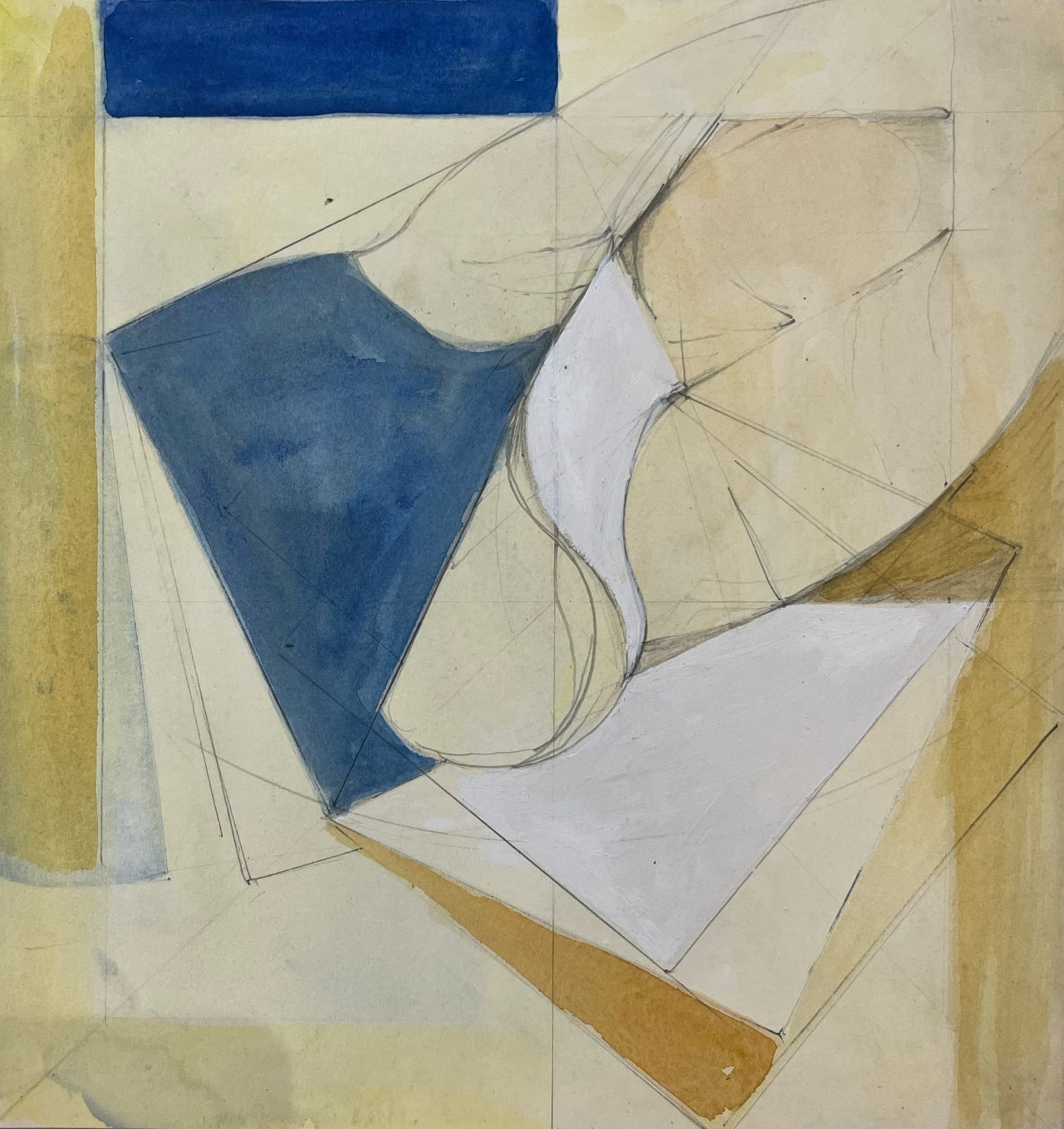Adrian Heath 1920-1992
-
Adrian Heath (1920–1992) was a British abstract painter known for his geometric compositions and commitment to non-figurative art. His work often features interlocking shapes and carefully balanced forms, reflecting a strong interest in structure and rhythm.
After serving in the Second World War—during which he was held as a prisoner of war—Heath returned to the Slade School of Art and began developing his abstract language. He was influenced by Constructivism and the work of European modernists, but also maintained links with artists from the St Ives group, blending precision with a sense of movement and energy.
Heath was not only a painter but also a teacher and writer, actively supporting abstract art in Britain during a period when it was still gaining wider acceptance. His work appears in several major public collections and remains a key part of the post-war British abstract movement.
-
Works
Adrian Heath 1920-1992
Study 'Here' 3 #1, 1984Graphite, watercolour and acrylic29 x 26.4cmCopyright The ArtistBiographyBorn in Burma, Adrian Heath moved to England aged five, eventually attending Newlyn School of Art, where he was taught by Stanhope Forbes, and the Slade School of Fine Art (1939, 1945-47). Heath served in the Royal Air Force in World War II and was a prisoner of war for several years. During this time, he met fellow detainee Terry Frost (1915-2003) and taught Frost to paint.
Heath's first solo exhibition was held at the Museé Carcassone, France in 1948. He exhibited at Redfern Gallery and Hanover Gallery in London in the decades that followed and throughout Europe during his lifetime.
A committed teacher, Heath taught at the Bath Academy of Art from 1955 to 1957 and at the University of Reading from 1980 to 1985. He was Chairman of the Artists’ International Association between 1955 and 1964 and sat on the panel of the Arts Council from 1964 to 1967.
His work is included in many public collections and museums, including the Tate Collection; Victoria and Albert Museum, London; Whitworth Gallery, Manchester; and the Hirschhorn Museum, Washington.
FAQs
Adrian Heath (1920–1992) was a British abstract painter and teacher, recognised for his role in post-war British modernism. He was closely associated with the development of Constructivist art in Britain and was a key figure in promoting abstraction at a time when figurative painting still dominated. Heath studied at the Slade School of Fine Art and spent time in Paris, where he engaged with European modernist ideas. Throughout his career, he remained committed to exploring geometric forms, balance, and spatial relationships, producing paintings that are both disciplined and quietly expressive.
Adrian Heath’s style is firmly rooted in abstraction, with a strong focus on geometric structure and the careful arrangement of form and colour. His paintings often feature overlapping planes, grids, and interlocking shapes, creating a sense of rhythm and spatial tension. Heath was influenced by Constructivism and European modernism, but he brought a more personal, expressive touch to his compositions. His use of muted and sometimes vibrant colours, combined with precise handling of space, gave his paintings a calm, contemplative quality. Heath’s work remains a key part of Britain’s abstract art tradition.
Adrian Heath was inspired by a desire to explore form, balance, and the organisation of space rather than depicting recognisable subjects. His paintings reflect an interest in the formal qualities of composition, where shape, line, and colour interact to create a visual dialogue. Although abstract, his work often draws subtle inspiration from architecture, urban environments, and the natural world. Rather than representing specific scenes, Heath’s paintings suggest a structured emotional response to the world around him, aiming to evoke harmony, tension, or movement through purely visual means.
Adrian Heath studied at the Slade School of Fine Art in London both before and after World War II. His early education was interrupted by military service, during which he spent time as a prisoner of war, continuing to paint and teach fellow prisoners. After the war, he returned to the Slade and became part of a vibrant post-war generation of artists. His experiences, both academic and personal, shaped his commitment to abstraction. The Slade provided him with strong technical training while encouraging a broader engagement with contemporary artistic movements.
Adrian Heath played an important role in promoting abstract and Constructivist ideas in post-war Britain. He was part of a network of artists, including Victor Pasmore and Kenneth Martin, who sought to bring geometric abstraction into greater prominence. Heath was not only a practicing artist but also an influential teacher and writer, helping to build support for abstract art through exhibitions, teaching, and publications. His work and advocacy helped shift British art towards a more open acceptance of non-figurative painting, making him an important voice in mid-20th-century art movements.
Adrian Heath’s legacy is recognised as an important part of British post-war modernism, particularly for his contributions to the development of abstraction. His work helped bridge the gap between European Constructivism and British art, bringing new ideas about structure, form, and space to a wider audience. Although less widely known than some of his contemporaries, Heath is respected among collectors, historians, and artists for his disciplined, thoughtful approach to abstraction. His paintings continue to be exhibited and studied, appreciated for their clarity, subtlety, and commitment to modernist principles.


